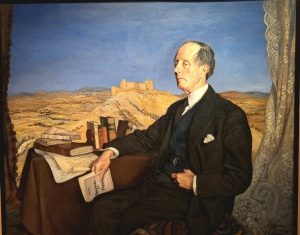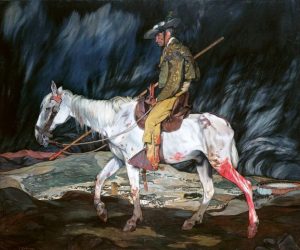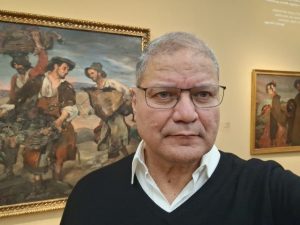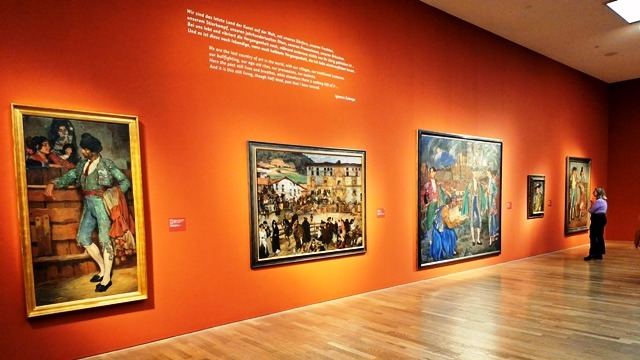Salah Soliman
Salah.solima@qgmx.de
In a cultural event at an art gallery in Munich, a splendid collection of paintings by the renowned Spanish artist Ignacio Zuloaga is currently on display. Ignacio Zuloaga, born on July 26, 1870, in Eibar, Basque Country, and passing away on October 31, 1945, is recognized as a painter of the “Spanish spirit.” He stood among the most esteemed Spanish artists who aligned themselves with Spanish nationalism, depicting it vividly in their paintings and exhibitions, including the ongoing one in Munich.
Zuloaga, known as the “Painter of the Spanish Soul,” excelled in capturing Spain’s essence throughout his illustrious artistic career. His mastery extended to portraying bullfighters in intricate detail, lively and dynamic Flamenco dancers, as well as depicting children, beggars, natural landscapes, and simple Spanish villages. He skillfully portrayed every detail of Spanish street life during that historical period.
Despite the European industrial revolution and Spain’s shift towards modernity, Zuloaga persistently maintained the Spanish spirit in his artworks, earning him significant international success. The Munich exhibition highlights his expertise in depicting Spanish personalities and meticulously detailing Spanish fashion of that era, providing a clear glimpse into the faces and clothing of Spain during that time.
This exhibition serves not only as an exploration of Spanish art during that period but also delves into Zuloaga’s journey between Spain and France. His return to Spain and resettlement in his homeland added a historical and cultural context to his paintings.
Upon close inspection of the displayed paintings in Munich, one notices the prevalence of black and gray colors. Some have described Zuloaga as a painter of a “Black Spain,” in contrast to the more cheerful representation by Joaquín Sorolla. Understanding Zuloaga’s life is integral to appreciating the exhibition; born into a family involved in metalwork, their craftsmanship, including weapon production for the noble class, garnered respect in Europe.
At the age of 18, Zuloaga moved to Paris, settling in Montmartre, and exhibited his first paintings at the Paris Salon in 1890. After continuing his studies in Paris and residing there for five years, he decided to return and settle in Seville, later in Segovia. During this period, he explored painting bold characters within natural landscapes or village scenes in the background, also portraying friends and family later on. However, he consistently favored earthy or muted colors, predominantly black and gray, with occasional vibrant colors in popular clothing, especially light red, featured in some paintings.
In the early stages of his professional life, Zuloaga faced humiliation when his paintings were rejected from the Brussels exhibition in 1900. However, he gained acceptance at the Venice Biennale in 1901 and 1903, exhibiting 34 canvas paintings at the International Exhibition in Barcelona in 1907.
Critics describe Zuloaga as someone seeking to record the vibrant and lively aspects of life in his paintings, specializing in popular genres that resisted modernization. He was unhesitant to challenge conventional norms before finalizing his concepts on canvas. Zuloaga ventured into the mountains, spent months with smugglers and mules, and associated with zealots and extremists to accurately depict his visions.
The conclusion of the tour among his paintings provides a vivid insight into Spain during that time, especially his boldness and almost fanatic attention to daily details that distinguished Spain from other European countries. Notably, Zuloaga’s distinctiveness lies in his lack of pursuit of popular sympathy; instead, he aimed to leave an indelible mark of his ideas on his canvases




